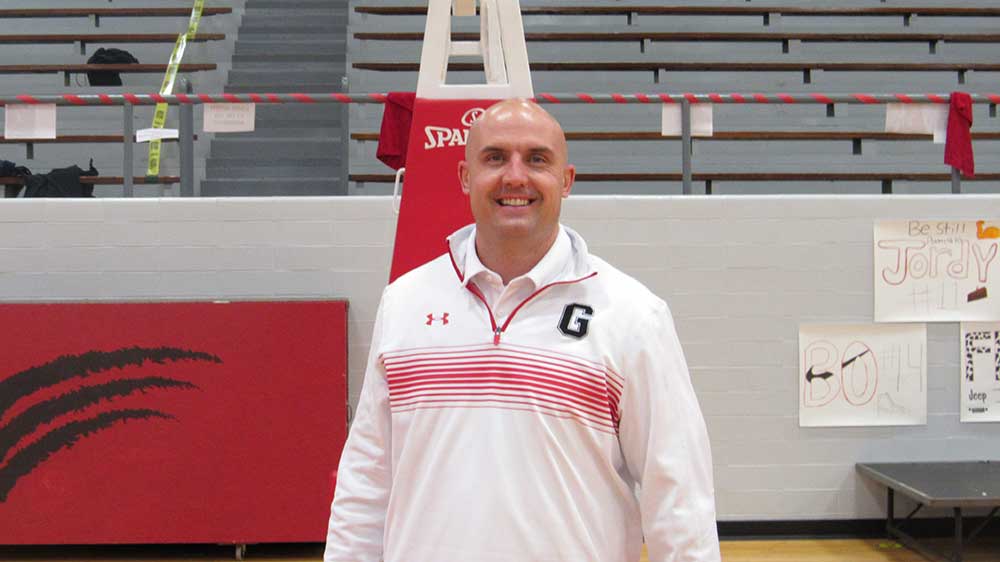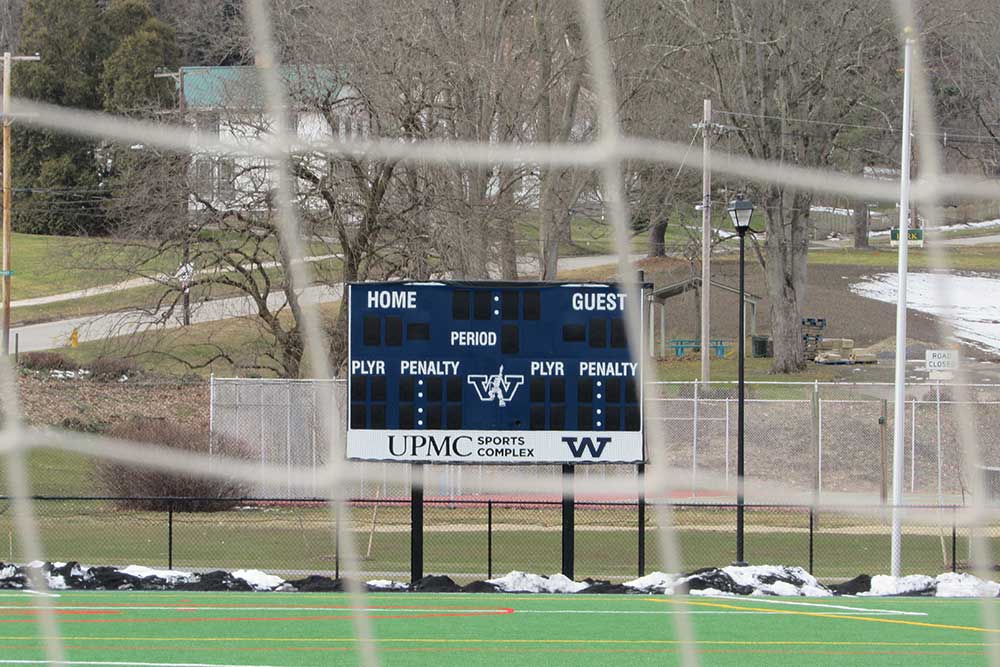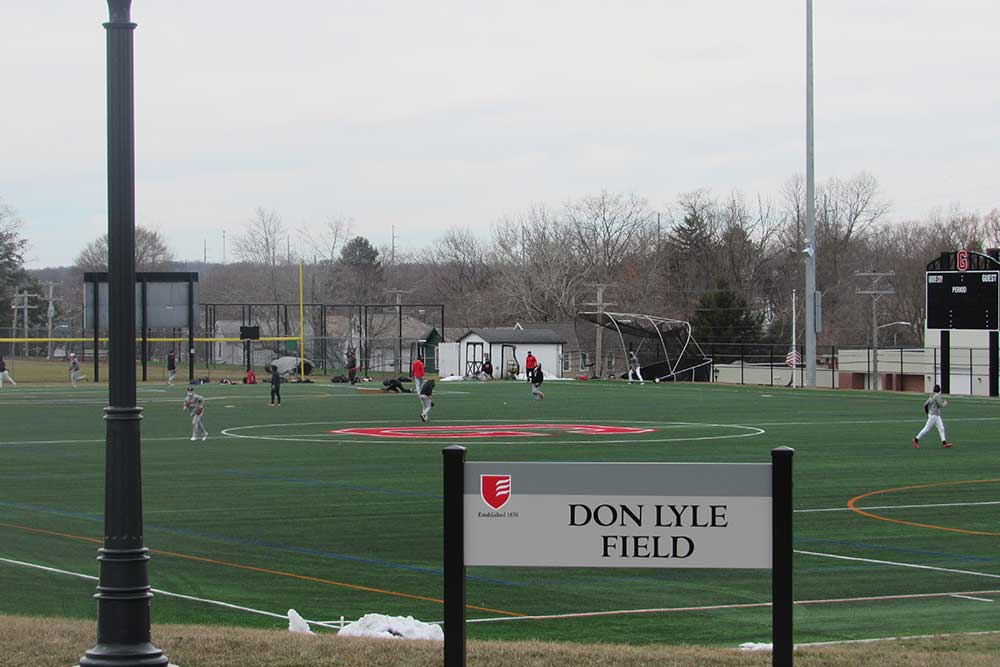COVID-19 Testing Expenses Don’t Slow GCC, Westminster Athletics
GROVE CITY, Pa. – On a late February afternoon, Grove City College director of athletics Todd Gibson breasted a sigh of relief. All of the school’s student-athletes and coaches had tested negative for COVID-19, quickly learning their results using antigen tests.
The majority of the school’s sports will occur during March, the result of a cancelled fall season for all NCAA Division III schools because of the coronavirus pandemic. Grove City College has recorded 725 results, between antigen and PCR tests. The PCR test follows a positive antigen test. An antigen test costs about $60, Gibson says, while the standard PCR test is $100.
Beginning March 1, football players and staff are being tested three times a week – accounting for another 330 tests per week. Gibson says those antigen tests are only $5 per test. Not only the testing, but all the disinfecting and other COVID-19 related precautions account for 20% to 25% of the school’s athletic budget, Gibson says. Six athletic staff members are trained to handle the testing, which runs from 9 a.m. to 1 p.m., Monday, Wednesday and Friday, along with two nurses paid hourly.
Grove City has nearly 500 student-athletes, comprising nearly a quarter of the campus population. There are 45 people on the school’s athletic staff.
“I’m thankful that we have a president that has said from Day One of this, ‘We’re going to figure out how we can play, and we’re going to figure out how we can afford it,’” Gibson says.

Such increases for an unprepared athletic department would usually mean cuts, but that is not the case at Grove City or Westminster College in New Wilmington, Pa. Westminster’s director of athletics, James Dafler, says half of students on this campus participate in the school’s 20-plus sports programs, but was never there a discussion about cutting any programs.
The COVID-19 testing and essentials are covered under a special campus-wide budget, only impacting less than 5% of the Westminster athletic budget. Dafler says he has a “tremendous” athletic training staff, finding they could obtain PCR tests for $50 where others have paid $100.
“I think it has been very helpful for the entire campus,” Dafler says “It’s not necessarily again impacting our budget because we weren’t paying for those tests, but the college was paying.”
Both Grove City and Westminster are NCAA Division III institutions. According to the NCAA, 135 Division III schools supported football in 2019, with student athletes accounting for 27% of the student body. Schools spent an average of $9,193 per student-athlete and 51% of the total expenditures spent on salaries, benefits and severances. The median total expenses of Division III schools with football in 2019 was $4,344,742, while the median generated revenue was $3,769,619.

Generated revenues – a figure that includes ticket sales, NCAA and conference distribution, contributions from alumni and others, along with concessions and other entities – did not exceed expenses for any school in 2019. That figure did not include allocated revenue of student activity fees, direct governmental and direct and indirect institutional support.
The cost to attend Westminster is $37,675, including a $600 activity fee. That increases for next school year to $38,230.00, including the aforementioned fee. Grove City’s tuition is $29,990. Those costs are before financial aid.
Gibson says Grove City athletics do not have corporate sponsorship, but the department works with several vendors and companies.
“We’re trying to be as careful as we can with the budget, being good stewards of our money, but we are operating as close to business as usual,” Gibson says.
At Grove City, 95% of the 2020 graduates are employed, in graduate school or serving others, according to the schools’ Office of Career Services. The school’s admissions have grown this past year. If admissions decline, it would mean less revenue; a 10% decline would decrease university revenue by around $300,000.
Gibson says Division III schools have seen a bigger influx of students coming to play athletics at their schools. Top-level schools haven’t had time to evaluate incoming players for the 2021 class, he says, and are not looking to take chances on unknown talent.
“It’s been the richest it’s ever been because there’s just more good players that aren’t going to Division I schools,” he says.

Division III programs do not offer college scholarships to student-athletes, while those at the Division I and II levels do. Westminster was a Division II program at one time.
The Towering Titan organization, founded in 1976 to raise money for scholarships, now uses its funds for athletic expenses such as travel costs. The athletic department also raises money for necessities, such as football helmets, through golf outings, car washes and concession sales.
The football team roster has increased over the years from 90 to 140. “We can’t share helmets,” Dafler says.
There are 58 total people on the athletic staff with 19 full-time and 17 part-time employees, 16 graduate assistants and six volunteers.
Recent athletics projects at Westminster include the expansion of the football locker room, artificial turf for the baseball field, installation of a new softball field, the Huey Heritage Center inside the front lobby of Memorial Field House and the UPMC Athletic Complex, which houses the school’s soccer and lacrosse programs.
Dafler says all five of these projects cost in excess of $6 million, but the expenses were mostly covered by donors and corporate sponsors.
UPMC and Westminster agreed to a 10-year sponsorship of the athletic complex in October 2019.
Pictured at top: Westminster College director of athletics James Dafler says there was never any discussion about cutting sports programs because of the pandemic.
Copyright 2024 The Business Journal, Youngstown, Ohio.



